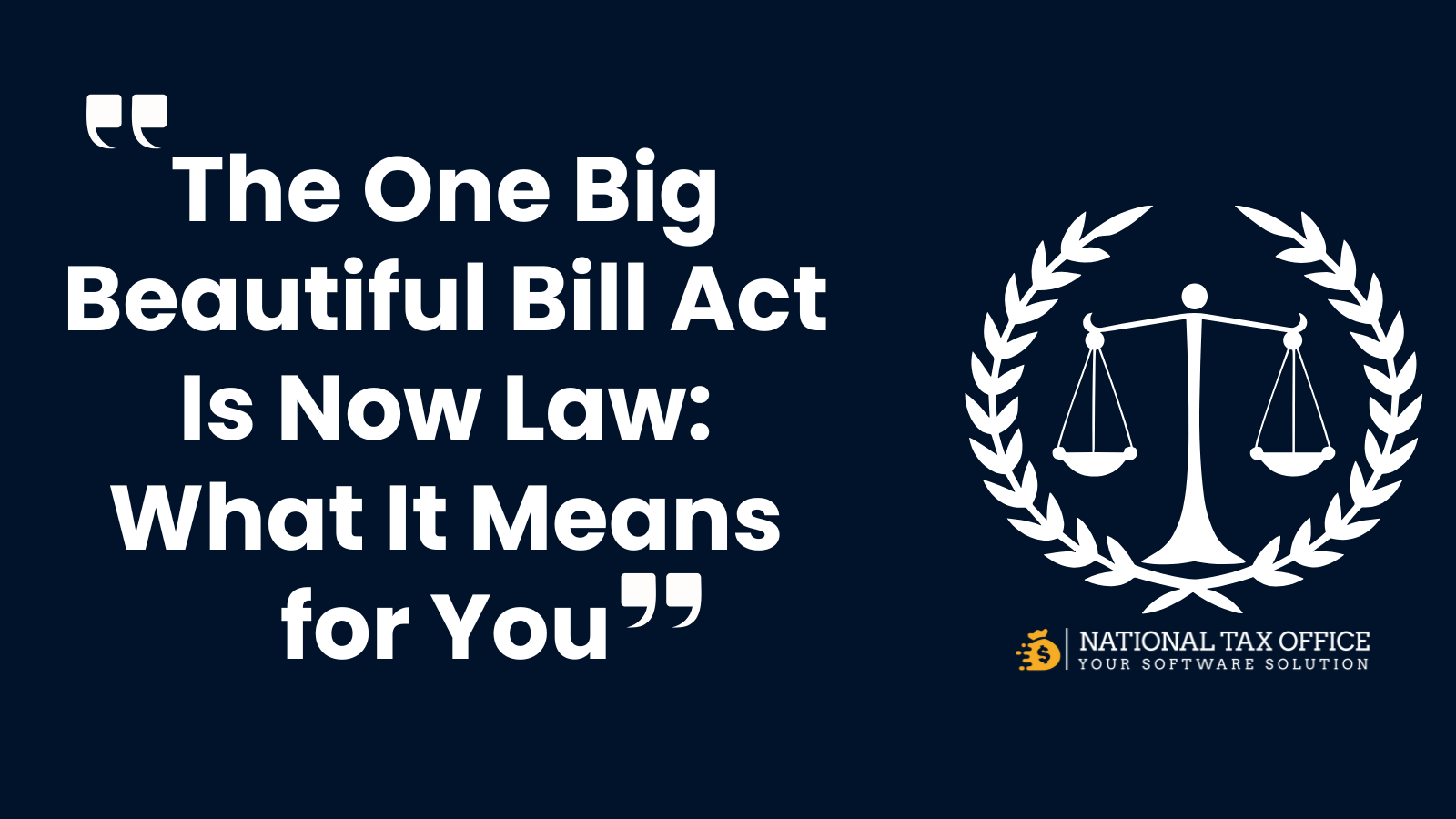On July 4, 2025, the One Big Beautiful Bill Act (H.R. 1) officially became law—marking one of the most impactful tax bills passed in recent years. This legislation locks in many of the 2017 Tax Cuts and Jobs Act provisions that were set to expire and makes permanent improvements to key tax credits that benefit families and low-income individuals.
Let’s dive into what this new law includes and how it could affect you.
Legislative Timeline
| Date | Action Taken |
|---|---|
| May 20, 2025 | Introduced in the House by Rep. Jodey Arrington (R-TX-19) |
| May 22, 2025 | Passed in the House of Representatives |
| July 1, 2025 | Passed in the Senate by a 50–50 vote (Vice President cast tie-breaking vote) |
| July 3, 2025 | Final version approved by House |
| July 4, 2025 | Signed by the President and became law |
| Now Law | Public Law No. 119-21 |
Key Tax Reforms & Credit Changes
This bill impacts tax rates, deductions, credits, and business taxes. Here’s a full breakdown:
| Provision | Before (2024 Rules) | Now (Under H.R. 1) | What It Means |
|---|---|---|---|
| Individual Tax Rates | 2017 TCJA reduced rates but they expired in 2025 | These lower rates are now permanent | No more sunset clauses—permanent lower rates |
| Standard Deduction | Increased in 2017, but set to revert in 2025 | Locked in permanently | Reduces taxable income, simplifies filing |
| Pass-Through Deduction (199A) | 20% deduction for qualified business income, temporary | Now permanent | Helps small biz owners & sole proprietors |
| Earned Income Tax Credit (EITC) | Boosted in 2021 (e.g. $1,500 for workers without kids) | 2021 enhancement made permanent | Bigger refunds for low-income individuals |
| Child & Dependent Care Credit | Up to $3,000 per child, non-refundable | Now refundable, up to $4,000 per child, $8,000 total | Supports working families with care costs |
| Child Tax Credit | $2,000 per child; partially refundable | Slightly reduced from expanded 2021 levels, but still strong | Middle-class families still benefit |
| Home Educator Deduction | Limited and inconsistent across states | Expanded at federal level | Homeschooling families can deduct costs |
| AI Program Funding | New federal AI initiatives introduced in prior years | Some funding repealed or removed | Budget redirected away from AI development |
In-Depth Breakdown:
Permanent Individual Tax Rate Cuts
The 2017 Tax Cuts and Jobs Act (TCJA) lowered federal income tax rates across most brackets—but those cuts were set to expire in 2025. H.R. 1 removes that expiration, ensuring that the current lower rates continue permanently. This gives individuals and families long-term clarity and savings.
Business Owner Win: 199A Deduction Now Permanent
If you’re self-employed, a freelancer, or own a small business, you’re probably familiar with the 20% deduction on qualified business income (QBI) under Section 199A. This deduction was going to expire in 2025—but not anymore.
What Changed:
- The deduction is now permanently available to pass-through entities like sole proprietorships, LLCs, S-Corps, and partnerships.
- Business owners can continue deducting up to 20% of their net income from federal taxation.
This is a major win for small business owners who rely on this tax break to reduce taxable income and reinvest in growth.
Child & Dependent Care Credit: Bigger and Refundable
Working parents can now claim up to $4,000 per child, or $8,000 for two or more children, for qualifying care expenses like daycare, babysitting, or after-school programs.
What’s new?
- The credit is fully refundable—even if you don’t owe taxes, you can still receive the full amount.
- This helps lower- and middle-income families access financial support to stay in the workforce.
Child Tax Credit: Strong, But Trimmed from Pandemic Highs
The expanded Child Tax Credit from 2021 is not fully retained, but this bill preserves a solid version:
- $2,000 per qualifying child
- Slight changes to refundability and income phase-outs
It’s less generous than during the pandemic, but still a critical credit for middle-income families.
Earned Income Tax Credit (EITC): Boosts Locked In
The 2021 expansion for workers without children is now permanent. This includes:
- Higher maximum credit
- Expanded eligibility (e.g., for students and older workers)
This is huge for workers in lower-paying jobs who rely on the EITC as a wage supplement.
Home School and Rural Support
Homeschooling families now qualify for more consistent, federal-level deductions for expenses like:
- Curriculum
- Supplies
- Testing and tutoring
The bill also includes provisions for rural health care access and support, though details are still forthcoming.
Reduced Federal AI Program Funding
In an effort to offset the cost of the bill, Congress removed funding from certain artificial intelligence programs that were part of prior spending packages. While not central to most taxpayers, this helps reduce the bill’s projected cost.
Final Takeaways
- This bill makes 2017 tax cuts permanent
- Families and small businesses win big
- Key tax credits are now stronger and more predictable
- Fewer surprises when filing taxes going forward

